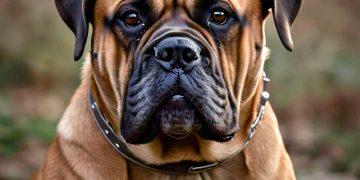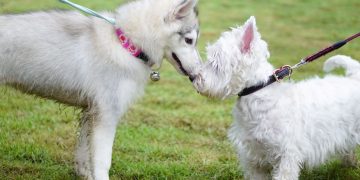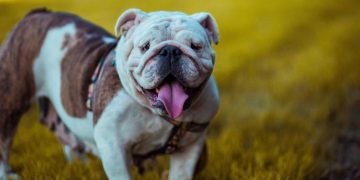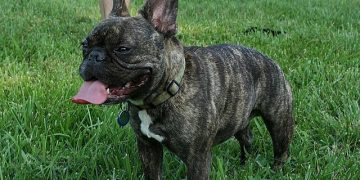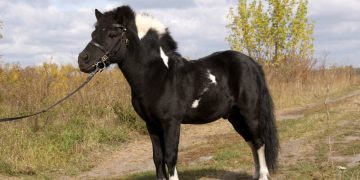Introduction
The Greyhound is a breed known for its speed, elegance, and gentle nature. Often recognized as one of the fastest dog breeds, Greyhounds have a rich history as both racing dogs and beloved family pets. This comprehensive guide will delve into the origins, physical characteristics, temperament, training needs, health considerations, and grooming requirements of the Greyhound, providing you with a well-rounded understanding of this remarkable breed.
History and Origins
The history of the Greyhound dates back thousands of years, making it one of the oldest dog breeds in existence. They are believed to have originated in ancient Egypt, where they were revered as hunting dogs by pharaohs. Evidence of Greyhounds has been found in Egyptian tombs, and they were often depicted in ancient art.
Greyhounds were bred for their speed and keen eyesight, making them exceptional hunting companions, particularly for coursing game like deer and hares. Their popularity spread throughout Europe, particularly in England, where they were used in hunting and later in dog racing.
In the 20th century, Greyhound racing became a popular sport, leading to a boom in their breeding. Today, many retired racing Greyhounds are adopted as pets, showcasing their adaptability and affectionate nature.
Physical Characteristics
Size and Build
- Height: Greyhounds are medium to large-sized dogs, typically standing between 25 to 30 inches (64 to 76 cm) at the shoulder.
- Weight: They usually weigh between 60 to 70 pounds (27 to 32 kg), with females generally being lighter than males.
- Body: Greyhounds have a slender, athletic build characterized by long legs, a deep chest, and a narrow waist, designed for speed and agility.
Coat and Colors
Greyhounds have a short, smooth coat that requires minimal grooming. Their coat colors can vary widely and include:
- Fawn
- Brindle
- Black
- Blue
- Red
- White
- A combination of these colors with various markings.
Distinctive Features
One of the most striking features of Greyhounds is their long, narrow heads and large, expressive eyes. Their ears are typically folded or rose-shaped, and their long necks contribute to their elegant silhouette.
Temperament and Personality
Greyhounds are known for their gentle and calm disposition, making them excellent companions. They are often referred to as “couch potatoes” because, despite their speed, they enjoy lounging and relaxing at home. Key personality traits include:
- Affectionate: Greyhounds bond closely with their families and enjoy being part of household activities.
- Gentle: They are typically good-natured and patient, making them great with children and other pets.
- Laid-back: Greyhounds are known for their calm demeanor and can adapt well to various living situations, including apartments.
- Intelligent: They are quick learners, but their independent nature means they may require consistent training.
Socialization
Early socialization is important for Greyhounds to ensure they grow into well-adjusted adults. Expose them to different people, environments, and other animals to help reduce any shyness or fearfulness.
Training and Exercise
Training Needs
Training a Greyhound requires patience and consistency. They respond well to positive reinforcement techniques and enjoy learning new commands. Consider the following training tips:
- Start Early: Begin training and socialization as soon as you bring your Greyhound home.
- Use Positive Reinforcement: Treats, praise, and playtime are effective motivators for Greyhounds.
- Be Consistent: Use clear commands and consistent cues to help them understand what is expected.
Exercise Requirements
While Greyhounds are known for their incredible speed, they do not require excessive exercise compared to other active breeds. Aim for at least 30 minutes to 1 hour of exercise daily, which can include:
- Leashed walks: Regular walks are essential for their physical health and mental stimulation.
- Playtime: Engage in games like fetch or lure coursing, which can satisfy their hunting instincts.
- Short bursts of speed: Allowing them to sprint in a safe, enclosed area can help expend their energy.
Health Considerations
Like all breeds, Greyhounds are prone to certain health issues. Being aware of these conditions can help owners take proactive measures to ensure their pet’s well-being.
Common Health Issues
- Hip Dysplasia: A genetic condition where the hip joint does not fit properly, leading to arthritis and discomfort.
- Bloat (Gastric Dilatation-Volvulus): A serious condition where the stomach fills with gas and twists, which can be life-threatening.
- Osteosarcoma: A type of bone cancer more common in larger breeds, including Greyhounds.
- Heart Issues: Greyhounds can be susceptible to heart diseases, including dilated cardiomyopathy.
Lifespan
The average lifespan of a Greyhound is between 10 to 14 years. Regular veterinary care, a balanced diet, and a healthy lifestyle can contribute to a longer and healthier life.
Grooming
Greyhounds have low grooming needs due to their short coat. Regular grooming helps maintain their coat health and minimizes shedding. Key grooming practices include:
- Brushing: Brush once a week to remove loose hair and dirt.
- Bathing: Bathe as needed, typically every few months or when they become dirty.
- Nail Trimming: Regularly trim nails to prevent overgrowth and discomfort.
- Dental Care: Brush teeth regularly and provide dental chews to promote oral health.
Conclusion
The Greyhound is a remarkable breed that combines elegance, speed, and a gentle temperament. They make excellent companions for families and individuals who can provide them with the care, training, and love they need. Whether you’re looking for a playful partner or a laid-back companion, the Greyhound can fit seamlessly into your life. By understanding their needs and characteristics, potential owners can ensure a fulfilling and rewarding relationship with this extraordinary breed.
FAQs
1. Are Greyhounds good with children?
Yes, they are generally good with children and can be patient and gentle companions.
2. How much exercise do Greyhounds need?
They require about 30 minutes to 1 hour of exercise daily, which can include walks and playtime.
3. Do Greyhounds shed a lot?
They shed minimally, and their short coat requires little grooming.
4. Are Greyhounds prone to health issues?
Yes, they can be susceptible to certain health conditions, including hip dysplasia and bloat. Regular veterinary check-ups are important.
5. How do I find a reputable Greyhound rescue or breeder?
Research reputable rescues and breeders through breed clubs and associations, ensuring they prioritize health testing and responsible breeding practices.
By understanding the Greyhound’s unique characteristics and needs, potential owners can make informed decisions and enjoy a loving companionship with this beautiful breed.


